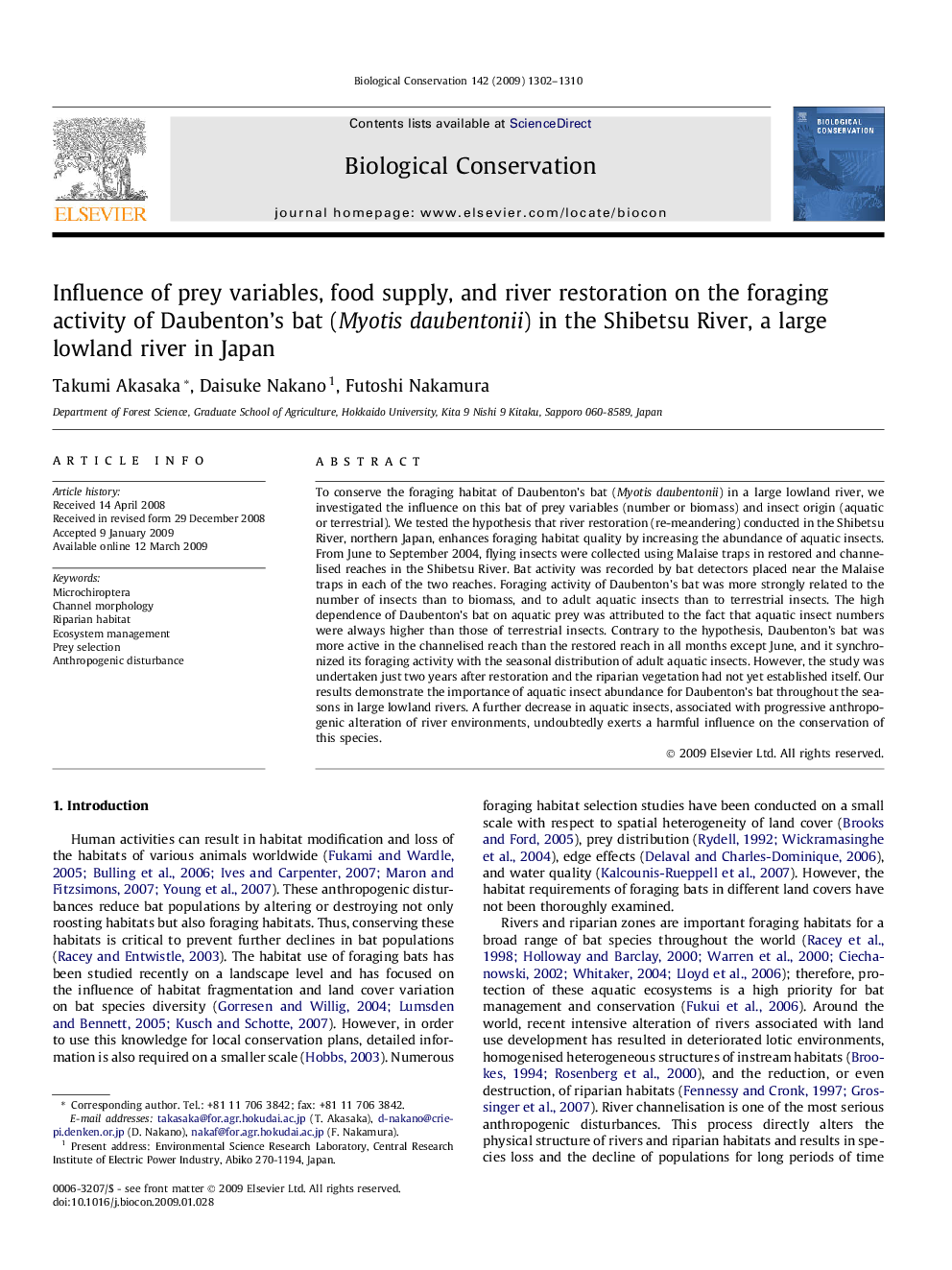| Article ID | Journal | Published Year | Pages | File Type |
|---|---|---|---|---|
| 4386463 | Biological Conservation | 2009 | 9 Pages |
To conserve the foraging habitat of Daubenton’s bat (Myotis daubentonii) in a large lowland river, we investigated the influence on this bat of prey variables (number or biomass) and insect origin (aquatic or terrestrial). We tested the hypothesis that river restoration (re-meandering) conducted in the Shibetsu River, northern Japan, enhances foraging habitat quality by increasing the abundance of aquatic insects. From June to September 2004, flying insects were collected using Malaise traps in restored and channelised reaches in the Shibetsu River. Bat activity was recorded by bat detectors placed near the Malaise traps in each of the two reaches. Foraging activity of Daubenton’s bat was more strongly related to the number of insects than to biomass, and to adult aquatic insects than to terrestrial insects. The high dependence of Daubenton’s bat on aquatic prey was attributed to the fact that aquatic insect numbers were always higher than those of terrestrial insects. Contrary to the hypothesis, Daubenton’s bat was more active in the channelised reach than the restored reach in all months except June, and it synchronized its foraging activity with the seasonal distribution of adult aquatic insects. However, the study was undertaken just two years after restoration and the riparian vegetation had not yet established itself. Our results demonstrate the importance of aquatic insect abundance for Daubenton’s bat throughout the seasons in large lowland rivers. A further decrease in aquatic insects, associated with progressive anthropogenic alteration of river environments, undoubtedly exerts a harmful influence on the conservation of this species.
